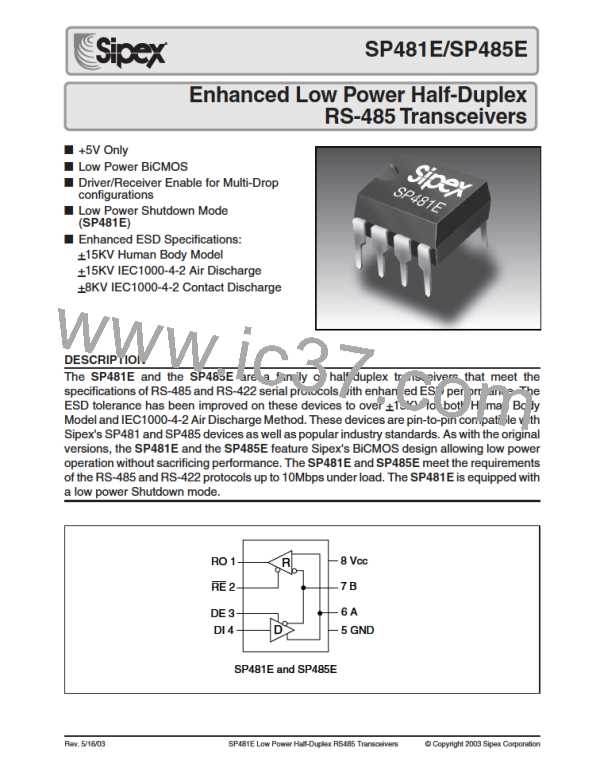systems. For system manufacturers, they must
guarantee a certain amount of ESD protection
since the system itself is exposed to the outside
environment and human presence. The premise
with IEC1000-4-2 is that the system is required
to withstand an amount of static electricity when
ESD is applied to points and surfaces of the
equipmentthatareaccessibletopersonnelduring
normal usage. The transceiver IC receives most
of the ESD current when the ESD source is
applied to the connector pins. The test circuit for
IEC1000-4-2 is shown on Figure 8. There are
two methods within IEC1000-4-2, the Air
Discharge method and the Contact Discharge
method.
The Human Body Model has been the generally
acceptedESDtestingmethodforsemiconductors.
This method is also specified in MIL-STD-883,
Method 3015.7 for ESD testing. The premise of
this ESD test is to simulate the human body’s
potential to store electro-static energy and
discharge it to an integrated circuit. The
simulation is performed by using a test model as
shown in Figure 7. This method will test the
IC’s capability to withstand an ESD transient
duringnormalhandlingsuchasinmanufacturing
areaswheretheICstendtobehandledfrequently.
The IEC-1000-4-2, formerly IEC801-2, is
generallyusedfortestingESDonequipmentand
R
R
S
S
R
R
C
C
SW2
SW2
SW1
SW1
Device
Under
Test
DC Power
Source
C
C
S
S
Figure 7. ESD Test Circuit for Human Body Model
Contact-Discharge Module
Contact-Discharge Module
R
R
R
R
S
S
R
R
V
V
C
C
SW2
SW2
SW1
SW1
Device
Under
Test
DC Power
Source
C
C
S
S
R
R
and R add up to 330Ω for IEC1000-4-2.
and R add up to 330Ω for IEC1000-4-2.
S
S
V
V
Figure 8. ESD Test Circuit for IEC1000-4-2
Rev. 5/16/03
SP481E Low Power Half-Duplex RS485 Transceivers
© Copyright 2003 Sipex Corporation
7

 SIPEX [ SIPEX CORPORATION ]
SIPEX [ SIPEX CORPORATION ]